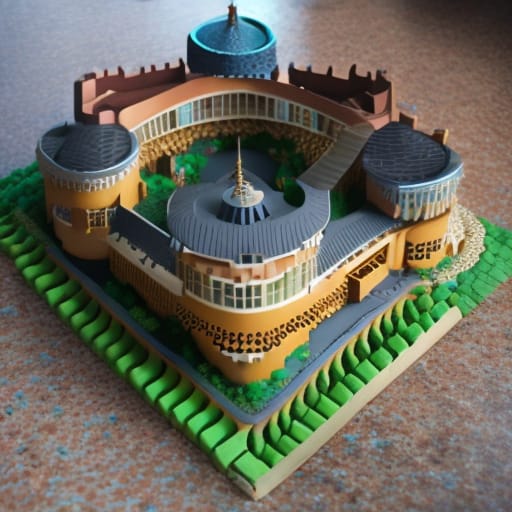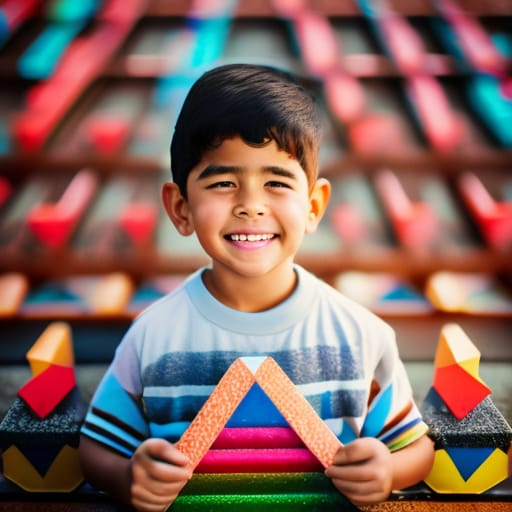Brightly colored blocks, interlocking bricks, magnetic tiles – building blocks inspire open-ended creativity in children while teaching important skills. With so many options available, how do you choose the right building toys to enhance your child’s development? This beginner’s guide covers everything you need to know, from the benefits of block play to finding toys blocks at local stores or in your community.
Why Building Blocks Matter for Early Learning
Building blocks might seem like simple children’s toys, but simple they are not. Research shows that playing with construction toys like blocks and interlocking bricks provides a wealth of developmental and educational benefits.
Development of Motor Skills
Manipulating blocks develops fine motor skills and hand-eye coordination. As children grasp, stack, and assemble blocks, they build strength, control, and dexterity in their hands and fingers.
{% include image.html url=”image1.jpg” description=”Toddler playing with mega blocks” %}
Enhanced Spatial Skills
Putting blocks together in different patterns improves spatial reasoning abilities. Visualizing and rotating shapes aids in STEM skills like engineering, design, and mathematics.
Language and Literacy Growth
Describing their block creations encourages oral language, expands vocabularies, and builds narrative skills. Later, symbolic block play promotes pre-reading skills.
In short, block play provides an open-ended learning canvas to practice skills from math concepts to social dynamics. No wonder building blocks are common in Montessori and Waldorf education models!
Types of Building Blocks
With a dizzying array of construction toys on the market, here is a quick guide to the most common options:
Classic Wooden Blocks
Simple, versatile wooden blocks in basic colors and shapes inspire creative open play. They develop spatial skills and knowledge of colors, shapes and counting.
Pros:
- Inexpensive
- Encourage creative play
- Develop spatial skills Cons:
- Not as engaging for older kids
| Set | Description | Price |
|---|---|---|
| Melissa & Doug | 30-piece painted solid wood block set | $19.99 |
Interlocking Plastic Blocks
Sets like LEGO or Mega Bloks use interlocking plastic bricks and mini figures to build elaborate structures, vehicles, buildings.
Pros:
- Engaging and challenging
- Promote STEM abilities Cons:
- Lots of small pieces
| Set | Description | Price |
|---|---|---|
| LEGO Classic Bricks | 221-piece creative brick set | $24.99 |
Magnetic Building Tiles
Magnetic tiles like Picasso Tiles and Magna-Tiles allow children to build vertically and horizontally with colorful magnetic play tiles.
Pros:
- Develop spatial skills
- Magnets hold structures up Cons:
- Expensive sets
| Set | Description | Price |
|---|---|---|
| Magna-Tiles 32 Piece Set | Vibrant magnetic building tiles | $49.95 |

Top Benefits of Building Blocks
It’s clear building toys develop crucial cognitive and motor skills. Additional benefits include:
Promote Problem Solving
To create more complex structures, children must critically assess stability, balance, and design. Block play strengthens critical thinking and problem solving abilities.
Self-Confidence and Social Skills
Completing an ambitious block project cultivates patience, self-motivation and encourages a “growth mindset”. Sharing creations promotes social and emotional skills like collaboration and communication.
Reinforce Educational Concepts
Elaborate block structures reinforce lessons in science, math, spelling, and beyond. Building toys present concepts like fractions, symmetry, balance and counting in an engaging, hands-on way.
While all building toys enrich development, some block types excel at teaching certain skills.
Finding the Right Building Blocks
With an abundant market of building sets, focus on your child’s age, interests and skills to select the best option.
Toddlers
For 1-3 year olds, classic wooden blocks in simple shapes build early motor control. Chunky blocks with rounded edges that easily stack promote sensorimotor stage development.
Preschoolers
3-5 year olds have developing fine motor and language skills prime for basic interlocking brick sets. Start with primary color and shape bricks to sort, stack, and build creativity.
Early School Age
Sets utilizing magnetic tiles, Technic bricks, or Brio train tracks inspire 5-9 year olds to create elaborate structures. These toys utilize emerging logical thinking abilities – planning multi-step constructions cultivates spatial sequencing skills.
Choose toys aligned with your child’s abilities. For all ages, vary accessories like toy animal figurines or street signs to spur storytelling and symbolic play. Building sets with broader age ranges suit siblings with mixed skills.
How to Get Building Blocks in Your Community
See if your local community offers opportunities to access and play with building blocks through events, organizations or learning programs.
Libraries
Public libraries frequently loan block sets and even provide play time. Attend regular building events or explore if your library has toys available to borrow.
Schools and Daycares
Many preschools and daycares center activities around building blocks. Ask about their curriculum and if they ever host family building events.
Workshops
Children’s museums, hardware stores, community centers, or toy stores may offer periodic workshops about building toys and STEM skills – Lego Robotics camps are popular.
Exchange Programs
Some parent groups have exchange programs where members share toys. Seasonally trade block sets between families to vary building inspiration.
Check bulletins at community centers, schools, or kids consignment sales for building block swap meets. These “block parties” allow children to explore new-to-them sets.
Building events create fun, shared family experiences while exposing children to develomentally-rich block play for low or no-cost.
Choosing Block Sets to Buy
While community access is great for variety, convenient home building block access enables frequent quality playtime.
Pick Trusted Brands
Stick to reputable brands compliant with toy safety standards like Lego, MegaBloks, or Melissa and Doug blocks. Check manufacturer websites for any safety recalls.
Sets to Suit Skill Level
Match sets with appropriate complexity, detail, and dexterity demands. Start simple with chunky wooden blocks or Duplos before graduating to elaborate Lego Technic kits.
Sets Under $50
Quality starter sets are available under $50. The Magna-Tiles 32 piece set develops spatial skills for $49.95. LEGO and MegaBloks also offer small kits to suit budgets.
Consider Child Interests
Does your child love Disney princesses or Pokémon? Look for themed kits featuring beloved characters to amplify engagement. Building sparks the imagination – choose accessories that speak to make-believe interests.

Maximizing Benefits of Building Toys
While blocks intrinsically enrich development, utilizing a few key strategies unlocks their full potential:
Allow Unstructured Play
Follow your child’s interests instead of issuing step-by-step directions. Unstructured block play fuels creativity, problem solving, and social interactions.
Ask Open-Ended Questions
Rather than quiz on shapes and colors, ask open questions about process and design choices to develop critical thinking and oral language abilities.
Exhibit Creations
Display finished block structures to encourage pride and cement learning. Take photos over time to illustrate progress.
Integrate Blocks in Learning
Use blocks to demonstrate educational concepts like spelling words, numeric values or science lessons – learning through play sticks!
Affordable, educational, and most importantly, fun – building blocks equip little minds with crucial skills. With an abundance of dynamic sets now available, select blocks tailored for your child’s interests and emerging abilities. Tap local community resources to access an ever-changing variety of blocks while buying a few key kits to enable play at home. Then watch your child build their way to developmental success!
Frequently Asked Questions
What are the best building blocks for a 12-month old?
For toddlers, choose large, chunky wooden blocks with rounded corners. Simple shape sorting blocks support developing motor skills.
Do interlocking bricks like LEGO sets teach STEM skills?
Yes, constructing elaborate structures with LEGO bricks promotes critical thinking, design principles and spatial reasoning – foundational STEM abilities.
How do I use construction toys like blocks at home for educational purposes?
Use your child’s block creations to demonstrate concepts like spelling, numbers or science facts. Ask open-ended questions to encourage problem solving and critical thinking.
Are Picasso Tiles or Magna-Tiles better magnetic building tiles?
Both quality brands effectively develop spatial skills. Magna-Tiles may use stronger magnets for better structural integrity but Picasso Tiles offers more aesthetic variety.
Where can I donate used toy blocks near me?
Children’s hospitals, family shelters, daycares, community centers and pediatric therapy clinics frequently accept donations of gently used, complete building block sets in good condition.
